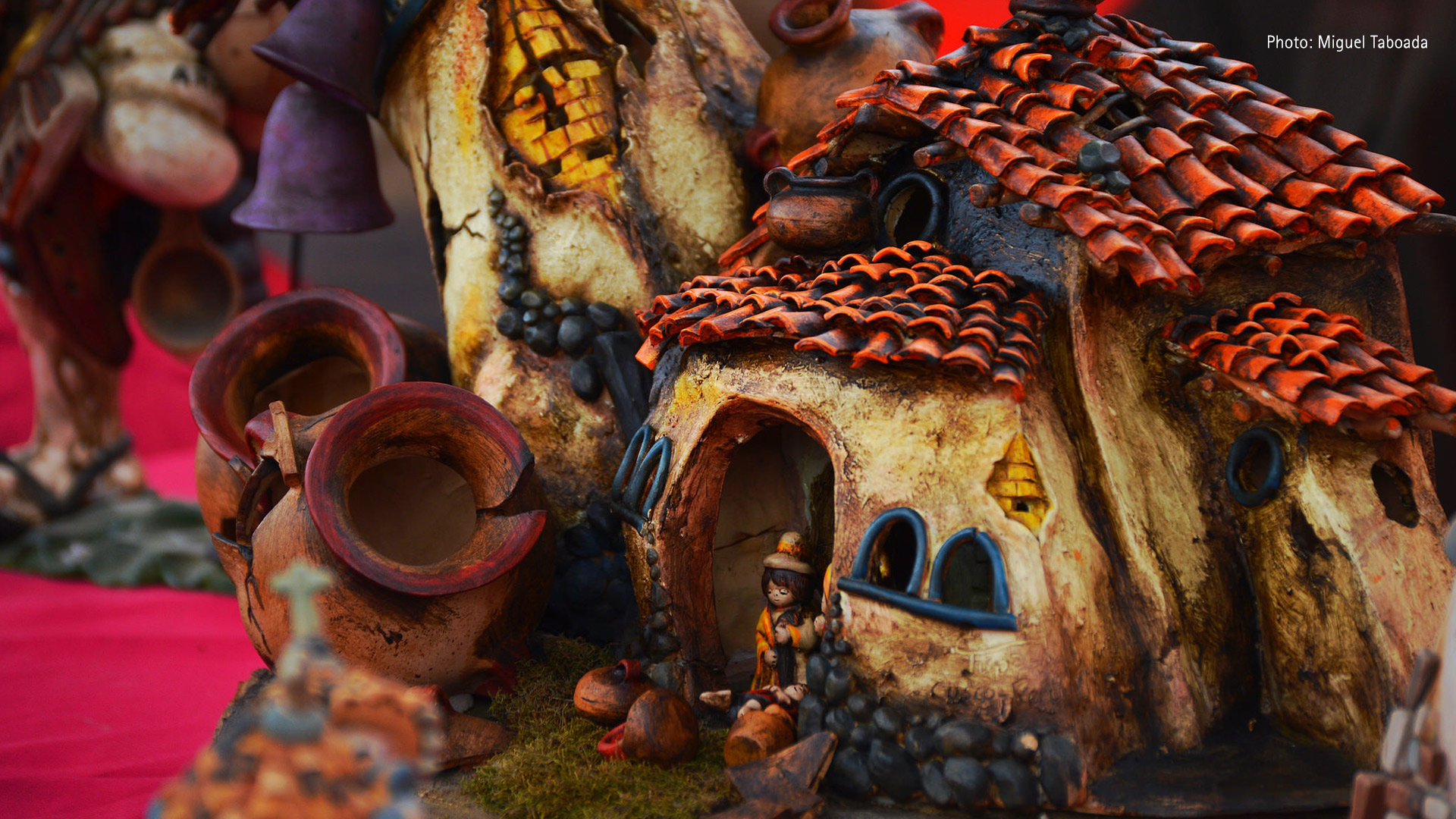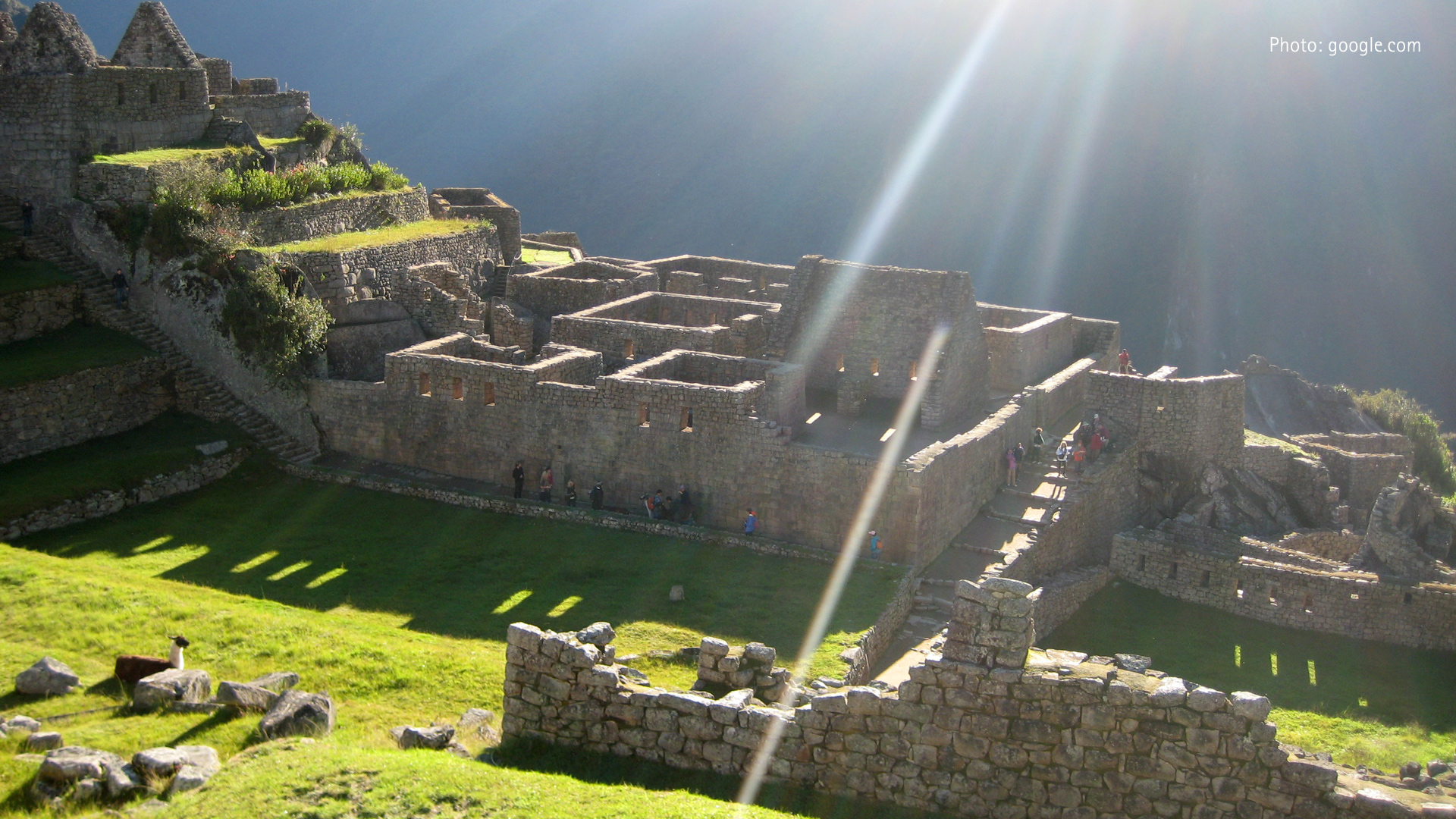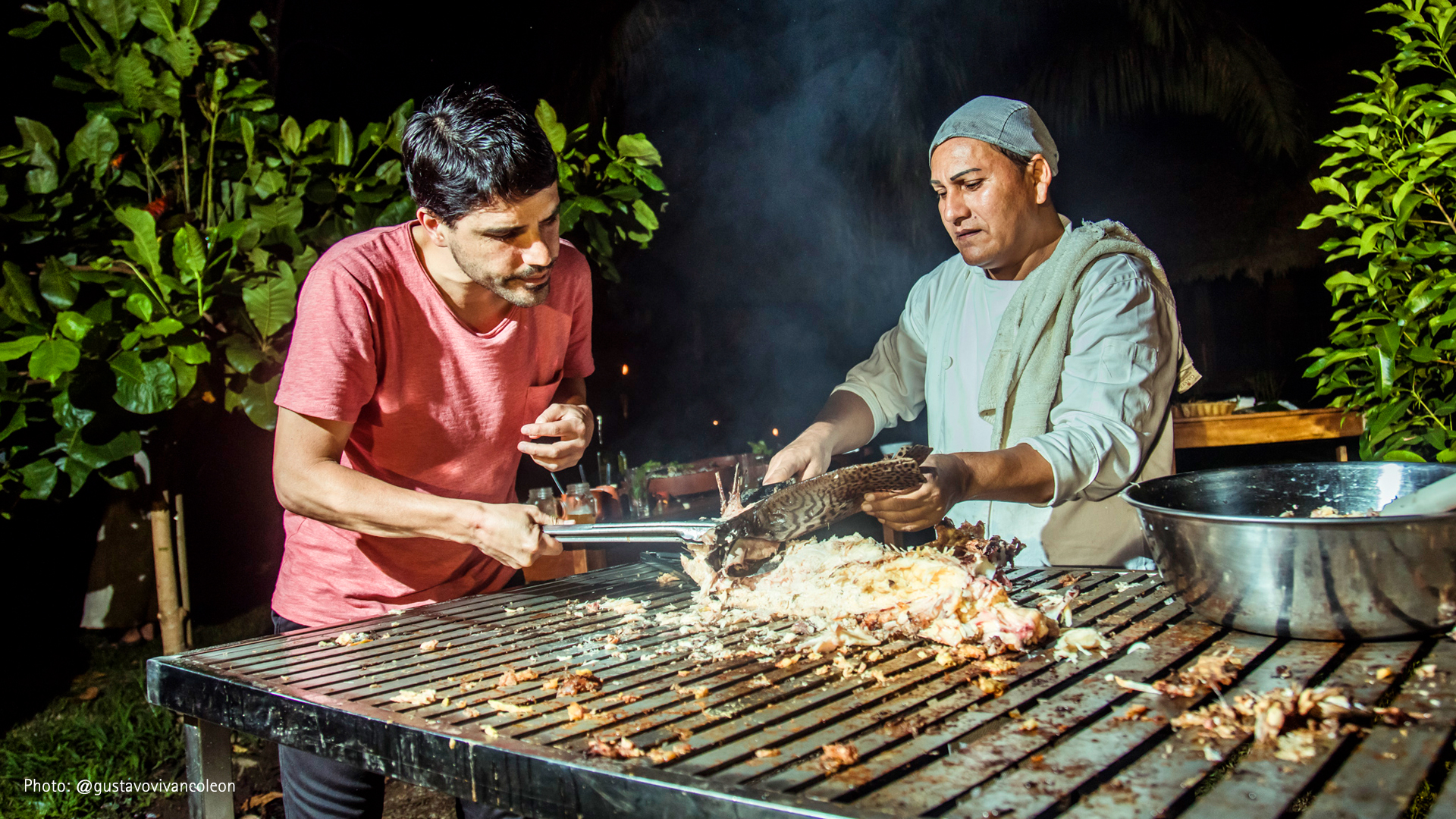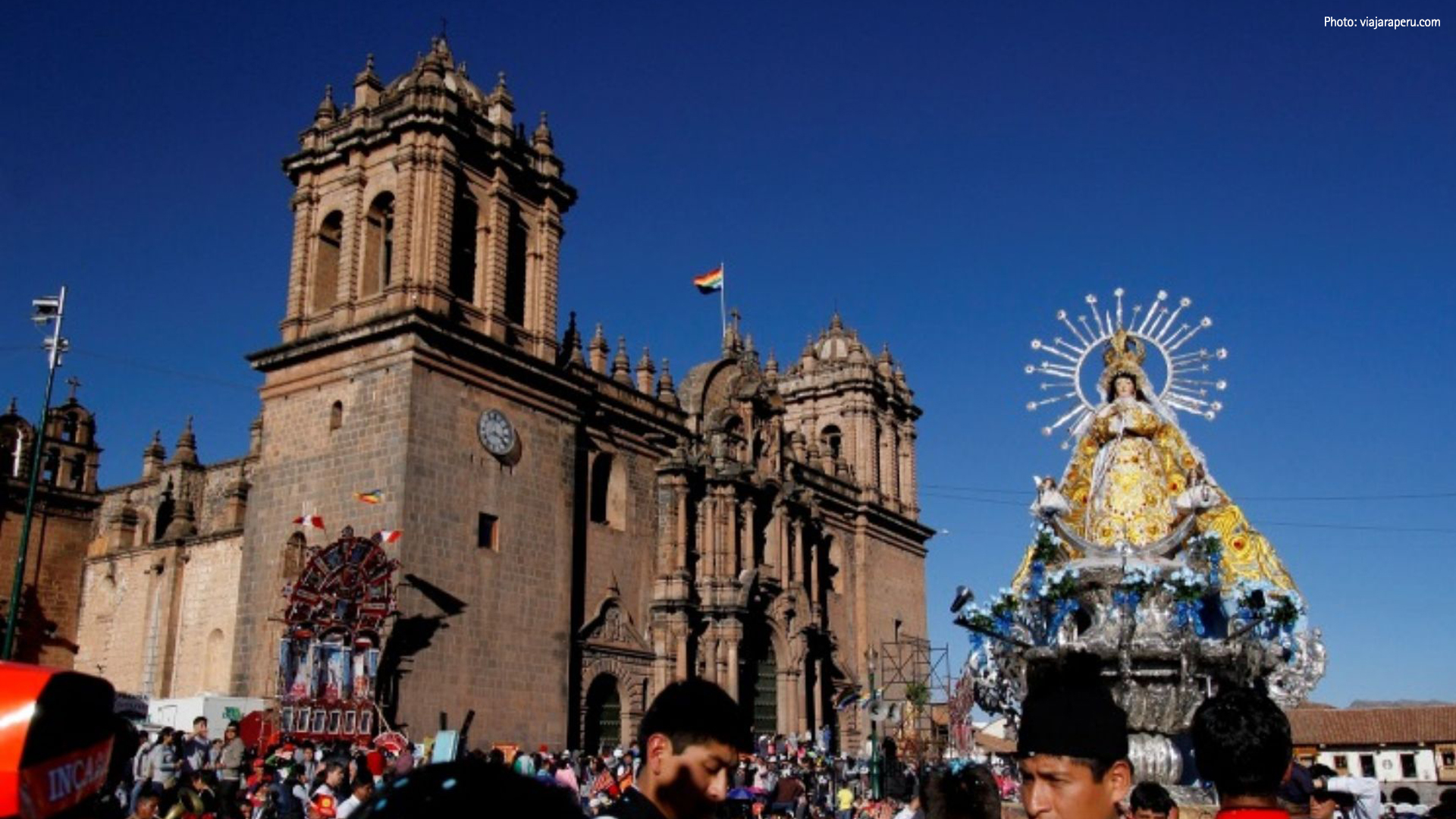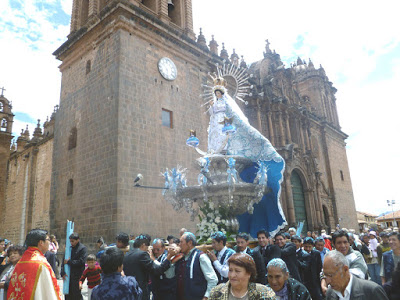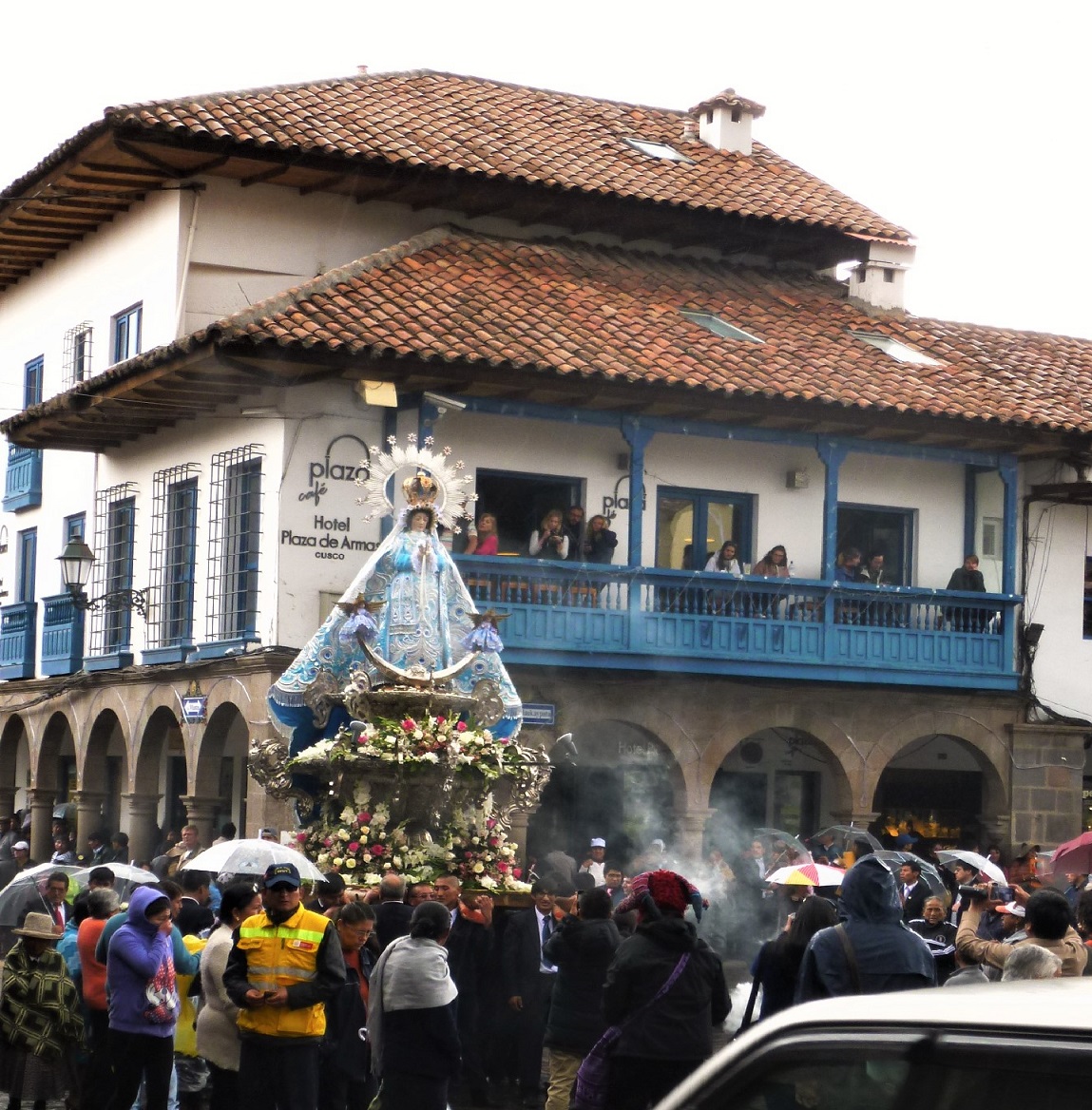Cusco is known for its famous celebrations over this festive period. It has long since been a place for revellers to congregate over Christmas and New Years, namely for its unique and distinguished location within the Andean mountain range.
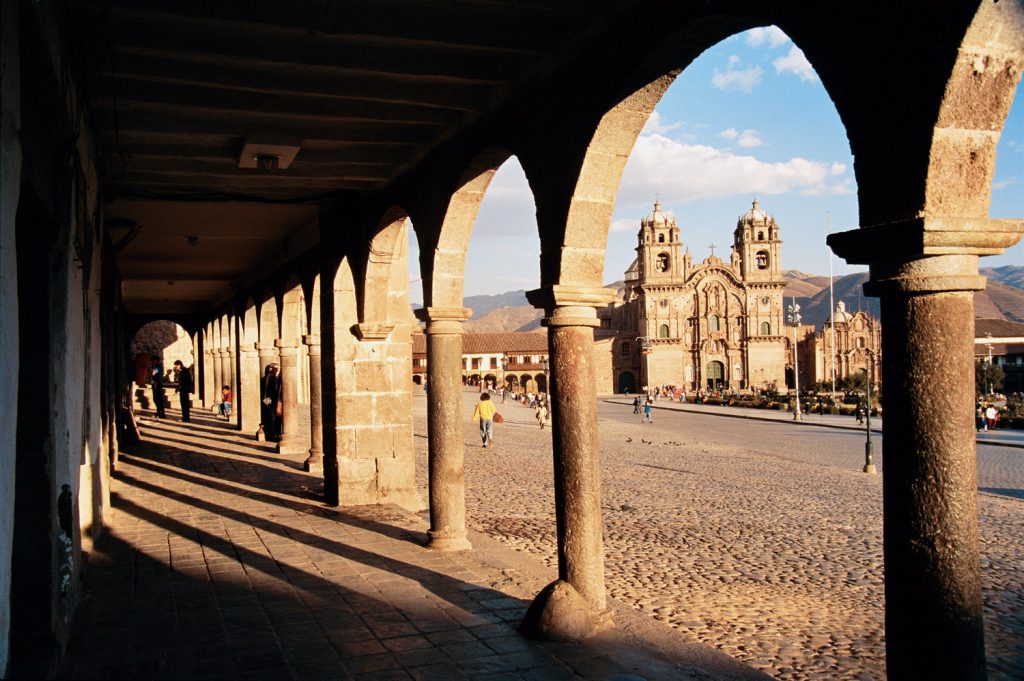
In the lead up to Christmas, Cusco is transformed by local artisans to welcome Santuranticuy, meaning “Sale of Saints”, one of the largest arts and crafts fairs in Peru. Just as in ancient times, this one of a kind Christmas fair is set up in the main square of Cusco, where local artists, sculptors, and religious image-makers gather every year to showcase their finest work.
The origins of Santuranticuy date back to the vice-regency over 500 years ago, when the fair was a celebration of images of Catholic Saints which were sold to create Nativity scenes in homes and churches.
The temporary fair held from 23rd to 24th December has become a part of Cusco’s Christmas festivities that enchant hundreds of Cusqueños and tourists each year. It is the ideal time to find unique pieces of high quality and originality and everything one may wish to decorate their home with or simply find gifts for lucky friends.
In Cusco, Nativity scenes are hugely important, often featuring the entire city. Niño Manuelito, a representation of baby Jesus, is the star of the fair among the images of the Catholic Saints. The name Manuelito is an endearing variation of “Emmanuel”, another name by which baby Jesus is referred to in the Catholic tradition. Niño Manuelito is very important for Cusco citizens and is displayed throughout the city, dressed with new clothing every year.
In the fair, visitors can find miniatures of every kind in various materials, designs and styles. The fair is worth a visit simply to admire the beautiful, intricate artefacts, and get a feel of Cusco’s spirit and tradition.
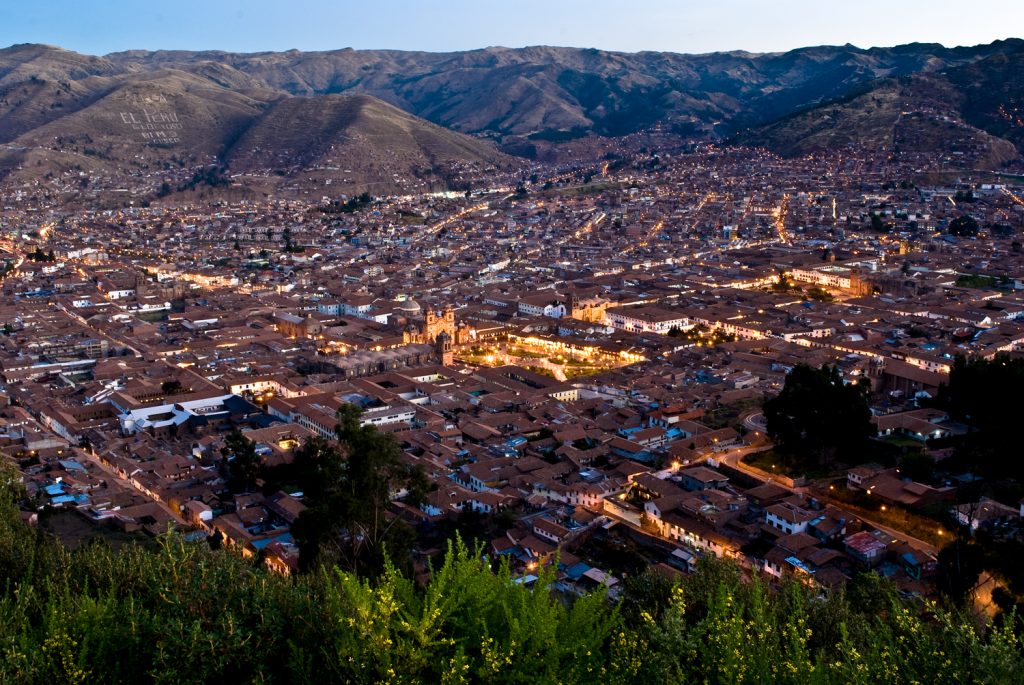
Having experienced a highlight of our Cusqueños culture, visitors can go on to see another side of the fair, equally fascinating and unique. Here, one can buy a whole host of unique clothes such as shirts and blouses with Andean and Amazon designs or contemporary clothing and art. From singular hand-woven chullos to delicate dried flower arrangements, Santuranticuy offers an array of incredibl pieces that visitors will want to take away with them.
A visit to Santuranticuy should definitely be a part of any Christmas trip to Peru. Due to the vast number of visitors to the fair and the sheer size of the fair, organizing one’s visit is highly recommended.
Similarly, Cusco is frequented by Peruvians and tourists alike on New Years, who come to view Ausangate. One of Peru’s most important holy mountains, (6,384 or 20,045ft a.s.l.) seeing Ausangate early morning on 1st January is said to bring your good luck for the forthcoming year. Traditions include El Correr, where thousands of people run around the edge of the plaza, stemming from the idea that if you run around the plaza with an empty suitcase you will have a year full of travelling!
From all of us at Inkaterra, we wish you season’s greetings and a very happy New Year! Keep up-to-date with all the latest from Inkaterra in 2019 by visiting Inkaterra.com.


